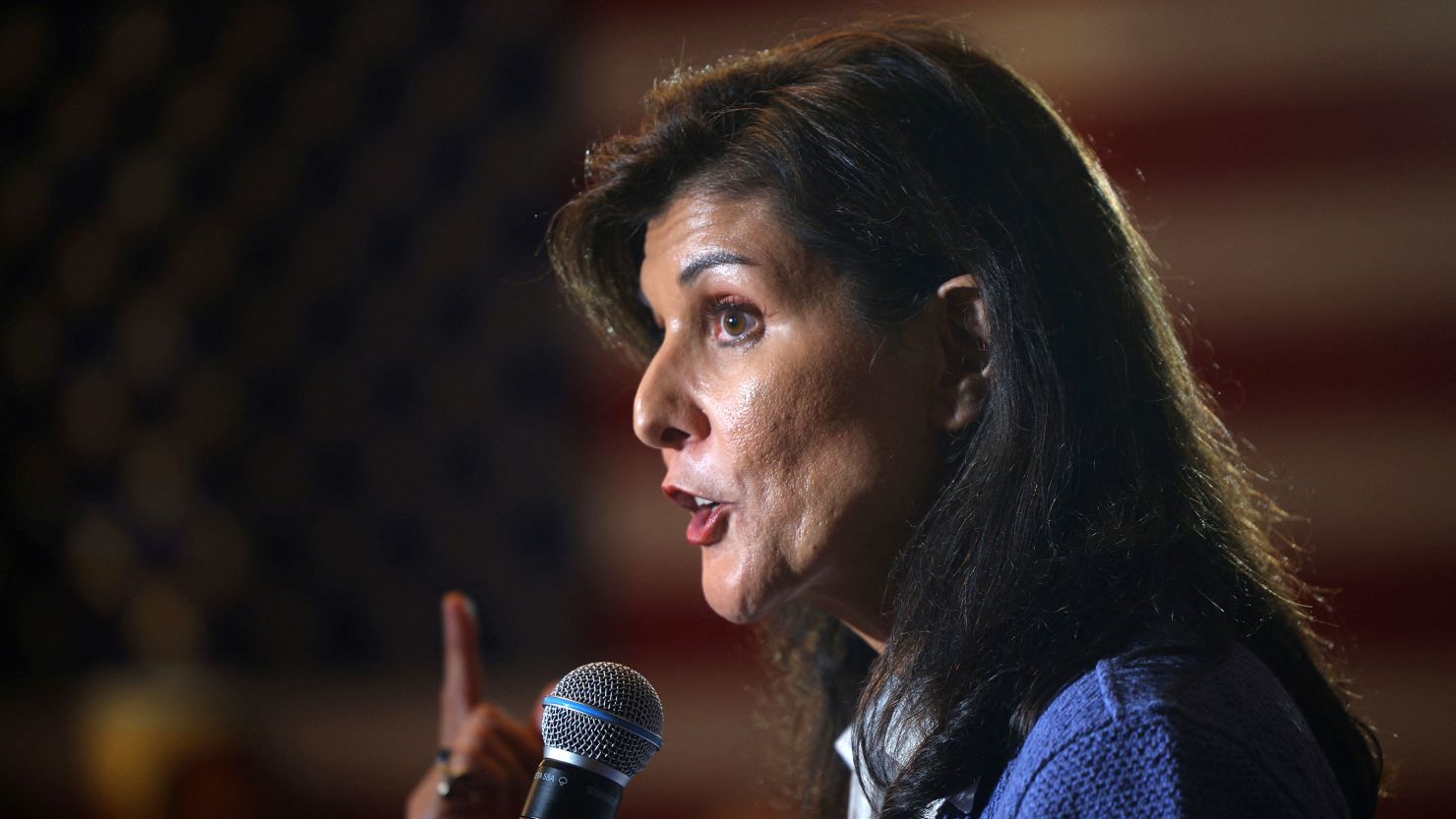We’ve entered the home stretch in the lead-up to the 2024 Republican presidential primary. And while Donald Trump continues to lead every major survey of the race, Nikki Haley seems to have at least some momentum to be his chief primary rival.
But does Haley have a real chance to win the nomination? History shows us she has a plausible road map.
Let’s start with the bad news for the former South Carolina governor. She’s still polling at about 10% nationally, while Trump tops 60% in many surveys. Not only is she 50 points behind the former president, Florida Gov. Ron DeSantis is in between them, polling at about 15%.
No one behind in the national polls by as much as Haley at this point in the primary calendar has ever ended up winning the nomination.
Primary contests, though, aren’t national affairs. They’re sequential contests, in which a state’s voting patterns can be affected by what happened in states that voted before it.
The early major contests on the Republican side are Iowa, New Hampshire and South Carolina. Trump leads in all of them, but by less than he does nationally.
A late October Des Moines Register poll had Trump at 43% to Haley and DeSantis each at 16% in Iowa. That’s a large lead. It’s not insurmountable.
Republican George H.W. Bush in 1980 and Democrat Dick Gephardt in 1988 were down by at least 20 points at this point before the caucuses. They both went on to win Iowa.
Haley, however, doesn’t need to win Iowa to secure the GOP nomination. What she needs is a boost coming out of the Hawkeye State.
That’s what happened to Democrat Gary Hart in 1984. He finished a distant second to Walter Mondale in Iowa, though he did better than the pre-caucus polls had suggested.
Indeed, history shows us that the best way to predict the New Hampshire primary results is to take into account the pre-primary polling in the Granite State as well as how much candidates outperform their polling in Iowa.
Hart’s overperformance in Iowa was a big reason he went to win the New Hampshire primary in 1984. He’s one of two candidates since 1980 to overcome a polling deficit of at least 20 points at this point in the campaign and win the nation’s first primary. (Republican Pat Buchanan in 1996 is the other.)
If Haley is able to gain additional momentum over the next month, she could theoretically repeat what Hart did. Keep in mind that about three-quarters of non-Trump supporters in Iowa were undecided, according to the Des Moines Register survey, so there’s plenty of room for Haley to work with.
It won’t be easy for her to repeat Hart’s achievement in New Hampshire, but it’s doable.
Like almost everywhere else, Trump continues to lead Haley in Granite State polling. Though his edge, our recent CNN survey conducted by the University of New Hampshire found, was significantly smaller than it has been in other key states. Trump was up 42% to 20% over Haley.
Additionally, only 29% of non-Trump supporters say they are locked into their vote in New Hampshire. This includes 25% of supporters of third-place candidate Chris Christie, who scored 14% in our CNN poll when primary voters were asked for their first choice.
When you dig in on who the former New Jersey governor’s voters say is their second choice, they overwhelmingly picked Haley (53%) over Trump (11%). With Christie polling below 5% nationally and in Iowa and in danger of not making this week’s GOP debate, who knows how his current supporters will be leaning by voting time.
Of course, none of the aforementioned candidates who overcame polling deficits of at least 20 points in the first two contests ended up winning the nomination.
Hart, though, came relatively close in 1984. He ended up finishing only a few points behind Mondale in the cumulative national primary vote, even though he was trailing the former vice president by about 40 points nationally at this point in the campaign. He had to overcome a number of other candidates nationally as well – including Jesse Jackson, John Glenn and George McGovern – which is more than Haley needs to.
Haley has one additional advantage over Hart. The third contest on the GOP side next year is South Carolina, where Haley served as governor.
Trump’s up 48% to 19% on Haley in South Carolina, according to a November Winthrop University survey. Notably, his very favorable rating among Republicans (52%) is not too far ahead of Haley’s (38%). That’s important because this metric often highly correlates with primary support.
It’s not difficult to see how Haley could close the gap in her home state. Whether she can go further and carry such momentum into other states is another question. If she can, then all bets are off.
The bottom line is that there is a pathway for Haley, though it’s a long and tough one. She will need to mount a lot of comebacks. There’s a reason no one has successfully traversed that pathway before.




